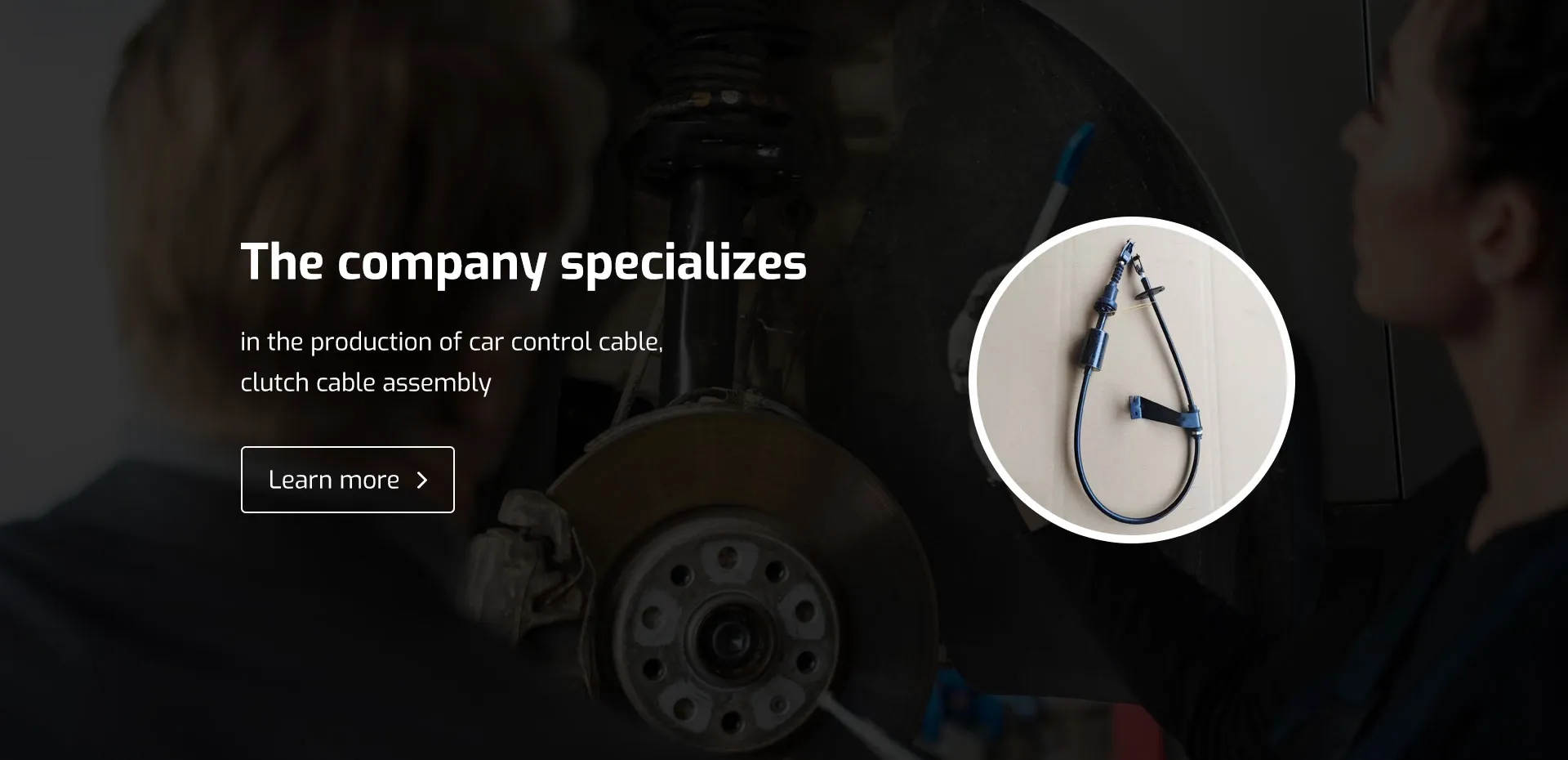inner gear cable
Understanding Inner Gear Cable A Comprehensive Guide
The world of bicycles is filled with intricate components that work in harmony to ensure a smooth and efficient ride. Among these components, the inner gear cable plays a crucial role in the performance of the bicycle's gear shifting system. In this article, we will delve into the details of inner gear cables, their importance, how they function, signs of wear, maintenance, and tips for replacement.
What is an Inner Gear Cable?
The inner gear cable is a thin, flexible wire that is housed within a protective casing. This cable is responsible for transmitting the rider's input from the gear shifter to the derailleur, which in turn moves the chain from one gear to another. It is a vital component of both derailleur and internal gear systems, ensuring that gear changes are seamless and accurate.
Importance of Inner Gear Cables
The inner gear cable plays a significant role in cycling performance. A well-functioning cable allows for precise gear changes, which can enhance the rider's efficiency and comfort. When a rider shifts gears, the inner cable pulls on the derailleur, allowing the chain to move to a different gear. This process is essential for optimizing pedaling efficiency, especially on varying terrains.
Moreover, the quality of the inner gear cable can greatly affect the overall cycling experience. A high-quality cable will offer less friction, resulting in smoother shifting. Conversely, a worn or poor-quality cable can lead to skipped gears or sluggish shifting, which can be frustrating for any cyclist.
How Inner Gear Cables Function
The inner gear cable operates in unison with the shifter and the derailleur. When the cyclist shifts gears using the shifter, it activates a mechanism that pulls or releases the inner cable. This action causes the derailleur to move, subsequently pushing or pulling the chain onto the desired gear. The entire process relies heavily on the integrity of the cable and its associated components.
One important feature of inner gear cables is their ability to withstand tension and maintain a consistent response, even under various cycling conditions. Quality cables are often made from stainless steel or other durable materials, allowing them to handle the mechanical wear and tear of regular cycling.
Signs of Wear and Tear
Over time, inner gear cables may experience wear, leading to a decline in performance. Riders should be aware of several signs that indicate their gear cable may need replacement. These include
inner gear cable

1. Sluggish Shifting If the gears are slow to respond or require multiple attempts to shift smoothly, it may be time to inspect the cables. 2. Visible Fraying Look for any signs of frayed or damaged cable strands. This can affect the cable's effectiveness and durability. 3. Rust or Corrosion Cables exposed to moisture and dirt can rust, affecting their operation. Regular checks can help identify such issues early. 4. Inconsistent Gear Changes If the derailleur does not move consistently when shifting, it may be due to a malfunctioning cable.
Maintenance Tips
Maintaining inner gear cables is essential for ensuring optimal shifting performance. Here are some tips for keeping them in peak condition
- Regular Inspection Periodically check the cables for signs of wear, fraying, or rust. Catching issues early can save a more extensive repair later. - Keep It Clean Regularly clean the cables and their housings to prevent dirt and grime build-up, which can cause friction. - Lubrication Apply a suitable lubricant to the cable to reduce friction within the casing, leading to smoother shifting performance.
Replacing Inner Gear Cables
If you notice significant wear and tear or persistent issues with shifting, it may be time to replace the inner gear cable. Here’s how you can do it
1. Remove the Old Cable Start by shifting into the easiest gear. Release the tension on the cable by loosening the derailleur screw. Disconnect it from the shifter and the derailleur.
2. Thread the New Cable Feed the new inner cable through the shifter and then through the derailleur.
3. Tighten and Adjust Pull the cable tight and secure it in place. Adjust the derailleur settings to ensure proper shifting.
4. Test the Shifting Once the new cable is in place, test the shifting to ensure everything functions correctly.
In conclusion, the inner gear cable is a small yet vital component of a bicycle's gearing system. Understanding its role, maintaining it properly, and recognizing when to replace it can enhance your cycling experience significantly, allowing you to ride with confidence and ease. Whether you are a casual rider or a dedicated cyclist, giving attention to your inner gear cable will undoubtedly pay off in smooth and reliable gear changes.
-
Workings of Clutch Pipe and Hose SystemsNewsJun.04,2025
-
The Inner Workings of Hand Brake Cable SystemsNewsJun.04,2025
-
The Secrets of Throttle and Accelerator CablesNewsJun.04,2025
-
The Hidden Lifeline of Your Transmission Gear Shift CablesNewsJun.04,2025
-
Demystifying Gear Cables and Shift LinkagesNewsJun.04,2025
-
Decoding Clutch Line Systems A Comprehensive GuideNewsJun.04,2025
